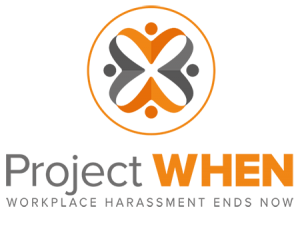SCG’s Kristen Reed & Matthew Stegmeier authored a piece for Facility Executive’s February 2017 edition, covering the results of our State of the Open Office Research Study and offering some practical tips for the many scenarios today’s facilities and corporate real estate Read More
SCG’s Sarah Mravec and Diane Stegmeier authored a piece for IFMA’s FMJ magazine’s January/February 2017 edition, covering the results of our State of the Open Office Research Study and offering some practical tips for the many scenarios today’s facilities and corporate real Read More
Over the past five to seven years, there’s been a significant shift in the way large pharmaceutical companies develop new drugs. Instead of relying heavily on their own internal research and development efforts, these companies are instead partnering with respected academic institutions Read More
Diane Stegmeier was approached by Cincinnati Magazine this summer to discuss a new, unique workspace in the Southwestern Ohio metropolis. The building, which serves as the headquarters to 84.51°, a consumer research firm, is an eye-catching structure featuring large panels of reflective glass Read More
Stegmeier Consulting Group partnered with Knoll in order to spread the word about the importance of developing a business case for new workplace strategies. SCG Founder and CEO Diane Stegmeier authored a whitepaper on the topic, and it has been added to Read More
To improve the bottom line, healthcare systems have made incremental changes to slow the historical escalation in healthcare costs. They have implemented lean/six sigma changes, improved patient safety, and developed better measures and matrix for patient outcomes. A different approach to patient care and communication has also enhanced results. Team-based, interdisciplinary problem solving is becoming much more prevalent in patient care.
Source: www.contractdesign.com
Interior design is undergoing its most drastic transformation since the sustainable design revolution of the 1990s. Advances made in creative methods, the application of data, neuroscience and health, and building performance are demanding new interior design leadership.
Designers who have mastered the skills to create functional and beautiful spaces are reshaping the interior landscape, from historic preservation and adaptive re-use to innovation in newly constructed spaces to meet the needs of changing working-and-living prototypes. Design entrepreneurs have moved the delivery of their services into cyberspace and are practicing their profession in a mobile, connected community.
Source: inhabitat.com
Functionality is just one of many aspects being taken into consideration in today’s contemporary office designs. No longer does a phyical workplace exist solely as a place for employees to “do work”. Instead, organizations are increasingly using workplace designs to trumpet who they are, what they do, and what they stand for.
A common theme is the use of branding within the workplace. Designs that relate back to a company’s product or service engage employees and enthrall visitors. We highlighted Coca-Cola’s Toronto headquarters in a recent article, but similar approaches can be seen in workplaces such as CSX, NPR, and Goodyear Tire.
At the end of the day, however, interior designers will be pressed to answer why their new concept is in fact more efficient and will allow for increased productivity – even if one of the goals of the project was to decrease the amount of needed space!
It is at this juncture where Stegmeier Consulting Group can provide our knowledge and over 13 years of experience working with organizational change initiatives to prepare and train individuals to effectively use their new environment. We serve as an insurance policy of sorts for design firms and corporations to make sure new workspaces are being used correctly, and that productivity does not drop during or after the transition. If your organization is interested in partnering with Stegmeier Consulting Group for these purposes, or is in need of assistance in selecting the proper design firm for your workplace strategy, contact us.
What makes a great workplace? A quick search on Google shows a combined global monthly total of over 50,000 searches involving the combination of terms “office”, “interior” and “design ideas”.
Source: servicefutures.com
Those who examine the evolution of the workplace have come to learn that over the years the phrase “going to work” has shifted from “going to DO work” to physically being present at a certain location for a period of time. Given that realization, it’s not surprising that such a strong emphasis has been placed recently on the quality and design of work’s physical location, especially as it pertains to the psychological state of the employees that occupy the space.
This article presents some interesting research and new ways of thinking about the workplace. Mentioned, of course, is the popular topic of open-office layouts, which Stegmeier Consulting discusses in-depth in a recent blog. Other items covered include interesting findings about how productivity is affected by natural lighting and even a room’s paint colors!
SCG has seen many clients transition their workplace from an outdated and bland office design to a re-energized layout using some of the very suggestions that are presented in this article. If you’re making a change to your work environment, regardless of which particular workplace solution you ultimately land on, it’s important to ensure that your workforce is ready and empowered to use the space as intended. It’s important to examine how a proposed change may affect employees and then come up with a game plan to make it a smooth transition for your workforce.
Check out both our Case Studies page as well as our project with Iron Mountain to see some examples of clients for whom we’ve led change management efforts and you’ll see how they’re happily conducting business in a vibrant environment!
Stegmeier Consulting Group can assist with a wide range of challenges involved in implementing a workplace change initiative. Contact us to find out how our services can help your organization.
https://stegmeierconsulting.com/contact/
Changing the way organizations manage workplace change
In 2010, the Coca-Cola brand acquired the North American operations of Coca-Cola Enterprises, and Coca-Cola Canada was faced with the challenge of merging the newly consolidated business units into a single headquarters.
The company decided to abandon their offices in suburban Thorncliffe and move everyone to the heart of downtown Toronto – a bold choice, geared at attracting and retaining top talent to work for Coke.
Source: workdesign.com
The images of the new Coca-Cola Canada headquarters are stunning, and the people-first theory behind the design is equally impressive. Many businesses claim their employees are their most cherished asset: they are the foundation of the organization, the front line and the behind the scenes miracle workers that connect a product or service to the rest of the world. But while many make this claim, how many can back it up simply by offering up the look and feel of the workplace they are providing their people?
The bright colors and corridors filled with natural light (not to mention a relaxing looking outdoor break area) are meant to put a bounce in the step of employees as they make their way through the Coca-Cola headquarters. The fact that the design offers a variety of work areas (not just all open space) is key as well. The idea that there is something for everyone is an important factor in what makes this new design so appealing, and is sure to assist with Coca-Cola’s goal to attract and retain top talent.
Stegmeier Consulting Group can assist with a wide range of challenges involved in implementing a workplace change initiative. Contact us to find out how our services can help your organization.
https://stegmeierconsulting.com/contact/
Changing the way organizations manage workplace change
Say goodbye to bland-looking cubicles, dueling thermostat wars, constructed walls and flat panel TVs, as the office of the future instead will be comprised of sleeping pods, self-luminous walls and treadmill-operated desks, according to winning entries in NAIOP’s 2014 Build-Out/Interior Design Competition. Winning entries were submitted by design firms Dekker/Perich/Sabatini, Albuquerque, New Mexico; DLR Group, offices coast-to-coast; and Ware Malcomb, Irvine, California.
Source: www.naiop.org
Treadmills and bicycles at workstations. Nanoparticle lighting systems. Biowalls to improve air quality.
The future workplace is being built today, and by all accounts we should be in for some exciting enhancements thanks to ergonomically appropriate and eco-friendly designs. But while the future concepts are sure to pique the interest of young talent, what of the existing workforce? Convincing an older, or more established workforce to trade their personalized cubicles and offices for open, flexible designs can be quite the challenge.
In fact, companies have invested large amounts of time and money in workplace change initiatives only to see those projects fail due to encountering unforeseen or unaddressed employee resistance. Teaming with Stegmeier Consulting Group can help you transition your outdated work environment, and prepare the individuals in your organization to be productive and innovative in the workplace of the future.
Stegmeier Consulting Group can assist with a wide range of challenges involved in implementing a workplace change initiative. Contact us to find out how our services can help your organization.
https://stegmeierconsulting.com/contact/
Changing the way organizations manage workplace change








